
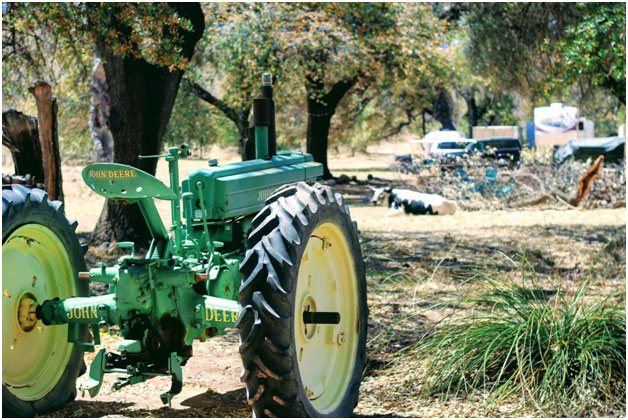
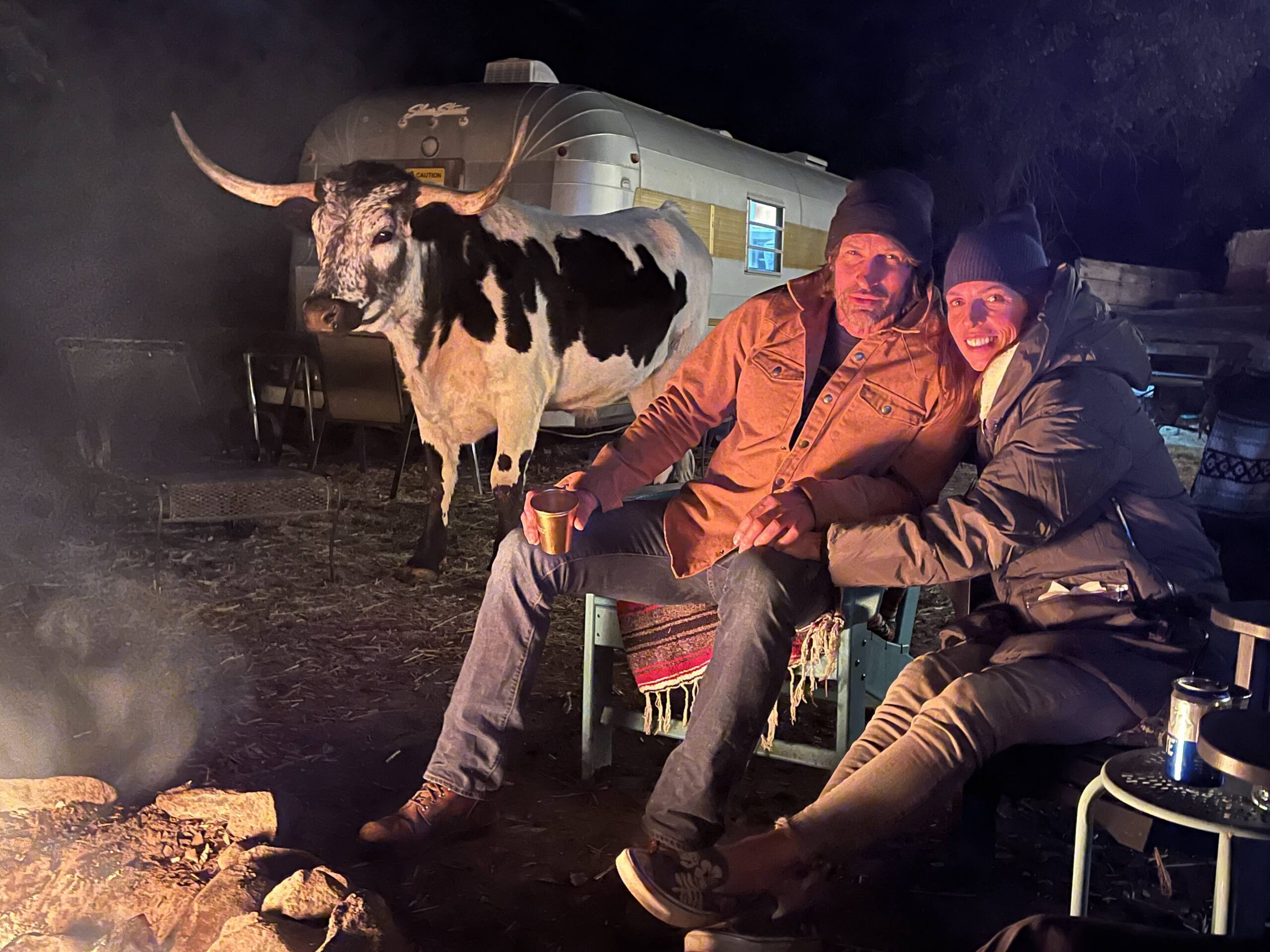
Nestled in the rolling hills of southern Arizona, Flux Canyon is a hidden gem that is surrounded by the beauty of the Circle Z Guest Ranch. Previously owned by the late Norman Cousins, Flux Canyon offers a rare glimpse into the rugged beauty of the American West.
Flux Canyon is a geological marvel, with towering rock formations, deep valleys, and pristine streams that run through its heart. With a rich history dating back to the formation of the Patagonia Sky Islands, Flux Canyon is a unique and beautiful landscape that is sure to take your breath away.
We became caretakers of the canyon in 2016 and have worked to preserve and share the magical space with close friends and organizations that share our vision. Ever Kiss A Longhorn?
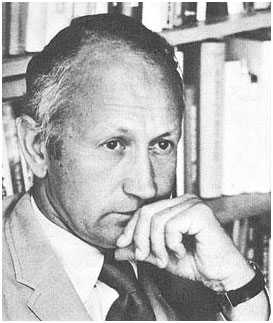
Norman Cousins was an American journalist, author, and political commentator. He was born on June 24, 1915, in Union City, New Jersey, and passed away on November 30, 1990, in Los Angeles, California.
Cousins was best known for his work as an editor of the Saturday Review, a popular magazine that focused on cultural and political issues. He was also a prolific writer, and his articles and books covered a wide range of subjects, from politics and world events to medicine and spirituality.
Perhaps Cousins’ most famous work is his book “Anatomy of an Illness,” which documented his experience with a rare form of arthritis. Through a combination of conventional medicine and alternative therapies, Cousins was able to overcome his illness and reclaim his health. The book became a bestseller and inspired countless people to explore alternative approaches to healing. The book became a movie in 1984, starring Ed Asner. The movie is a dramatization of Cousins’ personal experience with a serious illness and his journey to recovery through a combination of conventional medicine and alternative treatments.
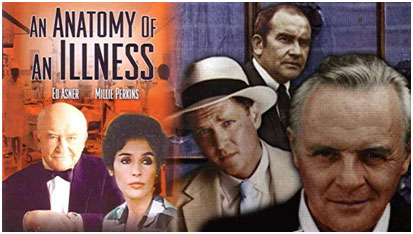 In the movie, Cousins, who was a well-known journalist and political commentator, is diagnosed with a debilitating and potentially life-threatening illness. Despite the prognosis from his doctors, Cousins refuses to accept that he is going to die and instead embarks on a journey to heal himself. One of the key aspects of Cousins’ approach was his belief in the power of the mind to affect the body. He believed that positive thoughts, humor, and a positive outlook could help to heal the body, and he used these techniques in combination with conventional medical treatments to aid in his recovery.
In the movie, Cousins, who was a well-known journalist and political commentator, is diagnosed with a debilitating and potentially life-threatening illness. Despite the prognosis from his doctors, Cousins refuses to accept that he is going to die and instead embarks on a journey to heal himself. One of the key aspects of Cousins’ approach was his belief in the power of the mind to affect the body. He believed that positive thoughts, humor, and a positive outlook could help to heal the body, and he used these techniques in combination with conventional medical treatments to aid in his recovery.
The movie dramatizes Cousins’ journey, including his experiences in the hospital, his interactions with his doctors, and his own efforts to heal himself. It highlights the importance of the mind-body connection in healing and the value of a positive outlook in the face of adversity.
The fact that Cousins’ loved our property as much as we do is a testament to the special history of Flux Canyon. Norman Cousins was a versatile and influential figure who made a lasting impact on the world of journalism, politics, and medicine. During the Cuban Missile Crisis of 1962, President John F. Kennedy enlisted the help of Norman Cousins in an effort to reduce tensions and find a peaceful resolution to the conflict.
Cousins was able to use his contacts in the Soviet Union to facilitate communication between the Kennedy administration and Soviet leaders, and he played a key role in the backchannel negotiations that eventually led to a peaceful resolution of the crisis.
One of the most notable actions Cousins took was arranging for a letter from Soviet Premier Nikita Khrushchev to be delivered to Kennedy, which helped to de-escalate the situation and paved the way for a peaceful resolution.
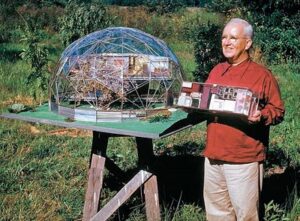 Buckminster Fuller and Norman Cousins worked together as colleagues and friends in the mid-20th century, collaborating on a number of projects related to architecture, design, and world peace.
Buckminster Fuller and Norman Cousins worked together as colleagues and friends in the mid-20th century, collaborating on a number of projects related to architecture, design, and world peace.
Fuller was a visionary architect and engineer known for his innovative designs and his efforts to promote sustainable living and environmental consciousness. Cousins was a journalist and author with a keen interest in world events and a passion for peace.
Together, Fuller and Cousins worked on a number of projects related to architecture and design, including the development of geodesic domes and other innovative structures. They also collaborated on efforts to promote world peace, using their influence and expertise to raise awareness about the dangers of nuclear weapons and to advocate for global cooperation and understanding.
One of the most notable projects that Fuller and Cousins worked on was the World Game, an educational simulation game that was designed to help players understand the complex interconnections of global systems and resources. The World Game was used by universities and other educational institutions around the world, and it helped to raise awareness about the challenges facing our planet and the need for sustainable solutions.
Buckminster Fuller and Norman Cousins were a dynamic duo who worked together on a number of projects that aimed to promote a better future for all. We found an article in the Tucson Citizen detailing plans that were never finalized for Fuller to build on Cousins’s ranch here in Flux Canyon. Their collaboration was driven by a shared vision of a world that was more sustainable, peaceful, and equitable, and their efforts helped to inspire countless others to work towards this goal.
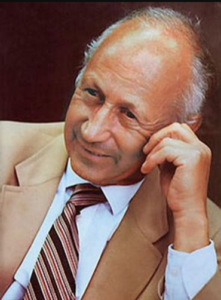 From the Tucson Citizen – Cousins, then president and editor of Saturday Review magazine was speaking to a combined audience of the Young Democrats of Greater Tucson and the Nucleus Club.
From the Tucson Citizen – Cousins, then president and editor of Saturday Review magazine was speaking to a combined audience of the Young Democrats of Greater Tucson and the Nucleus Club.
In an interview, he said that Tucson was in “far better shape than Phoenix, which is fast becoming one of the worst polluted cities in the U.S.” He urged Tucsonans to take action before this area was “another smog bowl.” Cousins had reason to be concerned about the quality of the southern Arizona environment, as he was building a home near Patagonia.
Cousins and his wife, Ellen, owned 400 acres near Patagonia, where they made their home. In 1972, he and renowned engineer Buckminster Fuller made plans to build geodesic domes in Flux Canyon. Each structure would be an integral unit, complete with its own energy system.
We cherish Flux Canyon for the very reasons that captured Norman’s heart. We continue to safeguard this unique location. We sit on land that was significant at the start of the Apache Wars, which ignited a conflict between Geronimo and the US government. Our land was historically significant through the post-Civil War mining era and was envisioned by Buckmaster Fuller in the 1970s as a new way to live and flourish with nature.
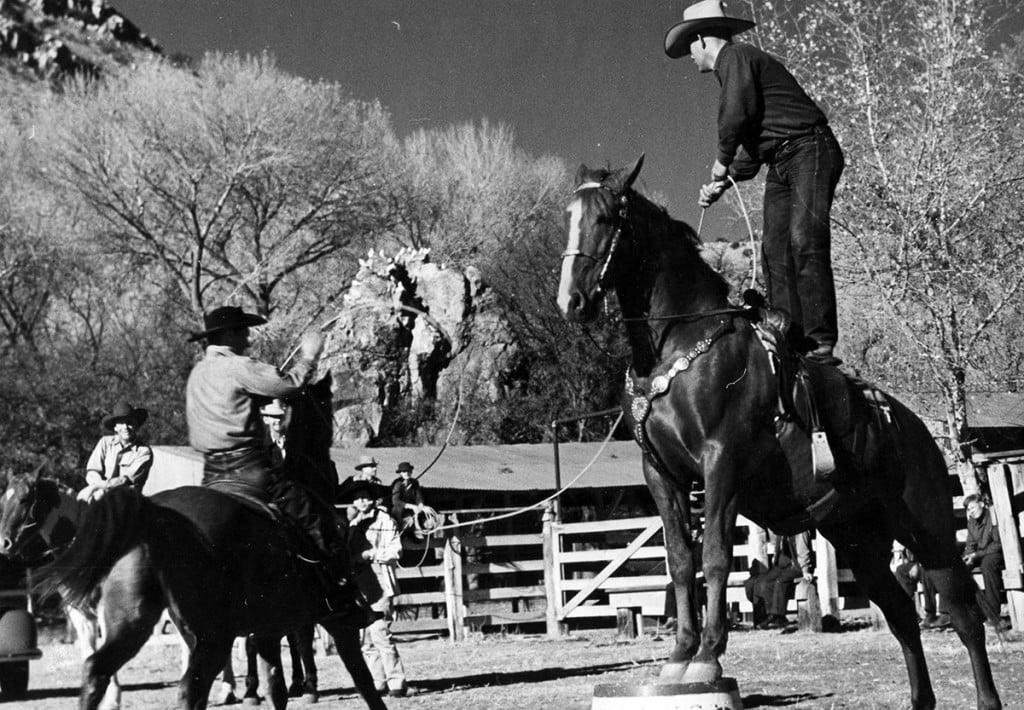
Surrounding the property is the 5000-acre ranch owned by the Circle Z dude ranch. You can live the entire Arizona ranch experience, complete with trail rides and
The Circle Z Ranch, which started as a sheep-herding operation in the 1880’s, was developed as a dude ranch in the 1920’s. It is the oldest continuously operating dude ranch in Arizona.
In 1874, Denton Gregory Sanford, a native of New York, arrived on Sonoita Creek. He homesteaded on what is now the Circle Z Ranch, a courageous endeavor considering that the Apaches were still raiding and robbing at that time. His four-room adobe, plus auxiliary buildings, made it “the finest hacienda in the southwest.” An impressive set of the Sanford adobe ruins remain today across Sonoita Creek from the Circle Z complex.
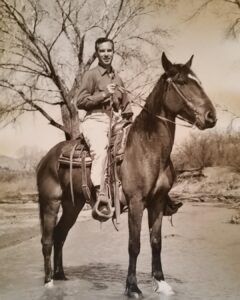 A number of Sanford’s relatives followed his lead, soon claiming hundreds of acres and controlling the water supply of a ten-mile strip of land. Cattle thieves were a constant problem in the area, but swift justice was meted out to rustlers, who soon learned to leave Sanford’s stock alone. John Cady was foreman on the Sanford Rancho in 1881 when they closed out their cattle stock and set 13,000 head of sheep grazing on the range. The sheep were only run until 1884 and proved quite profitable. Scarcer than cattle, they brought a better price.
A number of Sanford’s relatives followed his lead, soon claiming hundreds of acres and controlling the water supply of a ten-mile strip of land. Cattle thieves were a constant problem in the area, but swift justice was meted out to rustlers, who soon learned to leave Sanford’s stock alone. John Cady was foreman on the Sanford Rancho in 1881 when they closed out their cattle stock and set 13,000 head of sheep grazing on the range. The sheep were only run until 1884 and proved quite profitable. Scarcer than cattle, they brought a better price.
It was not until 1925 that the old Sanford Ranch passed out of the hands of the Sanfords. In that year, the Zinsmeister family of Louisville, KY, purchased the 5,000-acre spread from Sanford’s daughter for the location of the present Circle Z Ranch. They immediately began to develop one of the finest guest ranches in the state. It was the golden age of dude ranching, and the Dude Rancher’s Association was just forming. The facilities were opened in 1926 with a capacity of 24 guests. Over the next few years, it was increased to accommodate 70. The average length of stay for a guest was one month, and some families remained the entire season. Private railway cars of some guests remained in town on a siding by the Patagonia station. The flat land under Sanford Butte and west of the corrals served as the Circle Z polo field.
By 1929, the annual Fourth of July picnic and barbecue at the Circle Z was one of Santa Cruz County’s biggest attractions. Upwards of 2,000 people would attend this event; arriving by train and private car, they were served pit barbecue with all the trimmings. Guests enjoyed band concerts, a rodeo including calf roping, wild horse and mule riding, bronco riding, and a cigar race. A dance at Patagonia concluded the day. Then the Depression arrived, as did the drought, and the picnics were discontinued in 1934. Today, we scratch our heads in wonder about how all of it was accomplished without today’s conveniences.
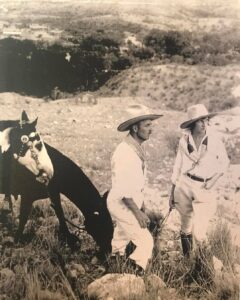 In the 1930’s Circle Z was the home of El Sultan, the Spanish stallion owned by the ranch. He was a Cartuja Spanish sire with the unique distinction of being the only one of his breeds in the U.S. Established in 1500, it is one of the oldest breeds in the world. He started as a gift from the Royal Spanish house before its abdication and reached the U.S. via Cuba. There were only six such stallions outside of Spain. In Spain, the breed is known as “Caballo Santo” (the saintly horse) because it originated by the church and had an extremely gentle disposition. The Spanish Remount has used the breed for centuries to produce cavalry horses. To this day, the Circle Z is noted for its fine horses. They are bred, raised, and trained on the ranch.
In the 1930’s Circle Z was the home of El Sultan, the Spanish stallion owned by the ranch. He was a Cartuja Spanish sire with the unique distinction of being the only one of his breeds in the U.S. Established in 1500, it is one of the oldest breeds in the world. He started as a gift from the Royal Spanish house before its abdication and reached the U.S. via Cuba. There were only six such stallions outside of Spain. In Spain, the breed is known as “Caballo Santo” (the saintly horse) because it originated by the church and had an extremely gentle disposition. The Spanish Remount has used the breed for centuries to produce cavalry horses. To this day, the Circle Z is noted for its fine horses. They are bred, raised, and trained on the ranch.
World War II put a crimp in the resort and travel business, and the Circle Z ended up changing hands several times. In 1949 Fred Fendig came from Chicago and purchased the Circle Z. He was the owner-manager for the next 25 years. In 1952 the centrally located main ranch house with its two beautiful living rooms and large dining room burned to the ground. The Zinsmeister house was taken over and became the lodge that year.
Hollywood has visited the ranch many times. Such movies as Broken Lance with Spencer Tracy and Monte Walsh with Lee Marvin have been filmed here. Scenes from El Dorado, with John Wayne, and the final episode of Gunsmoke was filmed on ranch property as well.
Over the years, the Circle Z has hosted a number of notable guests, including the writer Zane Grey, the actor Clark Gable, and the singer Bing Crosby. It has also been featured in several films and television shows, including “The High Chaparral” and “Bonanza.”
In 1968, the Circle Z was purchased by the Van Arsdale family, who have owned and operated the ranch ever since. In 1969, after considerable battling pro and con, the government dammed up Sonoita Creek several miles below the Circle Z. This formed Lake Patagonia, a narrow body of water three miles long, to be used for public fishing, boating, and water supply.
The high bluffs and tall cottonwoods seen in John Wayne’s movie El Dorado lay beneath this water. The TV Series Young Riders chose the ranch for locations, and the ranch tack house was used as the background for part of a nationally circulated Chevy truck advertisement. Arizona Highways magazine has frequently visited the ranch for photographs and feature articles.
Today, the Circle Z offers a variety of accommodations, including guest rooms and private cottages, as well as a range of activities such as horseback riding, hiking, birdwatching, and more. The ranch is also known for its delicious home-cooked meals and friendly hospitality, making it a favorite destination for travelers looking for an authentic western experience.
Around the Flux Canyon development and the Circle Z property are thousands of acres of forest service land. Visit and book your stay at the Circle Z, you’ll be glad you did.
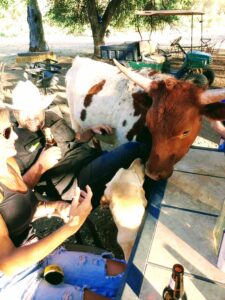 We are a longhorn hobby ranch.
We are a longhorn hobby ranch.
Our Longhorns come from the herd of Dave Martin. Dave is a lifelong resident of Patagonia who started raising the longhorn breed in the area 30 years ago. Dave’s herd is located in grazing pastures all over Patagonia and Sonoita. They are noted for their hardiness in the Arizona climate, big horns which can grow up to 7+ feet, and docile dispositions. These animals have become fixtures around the fire.
From the Bullock Museum – Austin, Texas The early roots of Texas ranching began with colonial conquest. In 1493, Christopher Columbus made his second voyage to the island of Hispaniola. He brought with him the first Spanish cattle and the precursors of the famed Texas longhorn.
Through the 16th and 17th centuries, cattle ranching continued to spread north through Spanish Mexico and into the land now known as Texas. The first cattle raising in Texas appeared in the Rio Grande Valley. By 1680, there were several thousand cattle recorded in the El Paso region. The earliest ranches were those of Spanish missionaries. By the mid-18th century, these were joined by competing for private ranches. Vaqueros were the first cowhands on these early ranches. Most vaqueros were from lower castas — socio-racial classes used by the Spanish government — like mestizo (of American Indian and Spanish ancestry), mulatto (of Spanish and African ancestry), American Indian, or African. They worked as independent contractors, owning their own horses, saddles, and ropes but remaining unbound to a hacienda or a patron unless they chose to be.
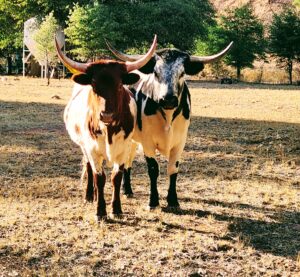 The Spanish crown saw an opportunity in the growing number of cattle in the region. In 1778, the crown imposed the contentious Fondo de Mestenos (Mustang Tax) on all unbranded cattle and horses. Cattle drives out of Texas also began at this time, mostly to provide military rations of beef. Written records from 1779 suggest that cattle were driven to Louisiana to feed Spanish soldiers fighting against the British in the American Revolution. The arrival of the cattle remains unconfirmed, but it would have been the first-ever drive out of Texas.
The Spanish crown saw an opportunity in the growing number of cattle in the region. In 1778, the crown imposed the contentious Fondo de Mestenos (Mustang Tax) on all unbranded cattle and horses. Cattle drives out of Texas also began at this time, mostly to provide military rations of beef. Written records from 1779 suggest that cattle were driven to Louisiana to feed Spanish soldiers fighting against the British in the American Revolution. The arrival of the cattle remains unconfirmed, but it would have been the first-ever drive out of Texas.
The Mustang Tax was revoked in 1795, and drives spread more rapidly to new markets. As a result, there was a major decline in cattle by the turn of the century. This was made worse by the turmoil of the Mexican War of Independence beginning in 1810. By the end of the war in 1821, the Spanish ranching economy had effectively dissolved. The war’s end also saw the establishment of the Austin Colony, led by Stephen F. Austin. Anglo American settlers were attracted by the availability of newly “empty” land for planting and cattle ranching. Over time, their eastern cattle bred with Spanish cattle and the Texas Longhorn was born.
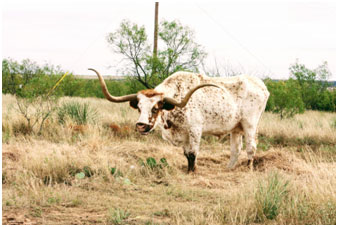 By the 1830s, settlers had blended eastern ranching techniques with those of their Spanish-Mexican predecessors. Cattle and beef were abundant in the Colony. Over the next decade, the upheaval of the Texas Revolution and Mexican-American War left large quantities of land and cattle abandoned by Mexican ranchers. American settlers began to spread into arid northern and western Texas, and the longhorn went with them. Through the ‘40s and ‘50s, the Texas ranching economy took off….
By the 1830s, settlers had blended eastern ranching techniques with those of their Spanish-Mexican predecessors. Cattle and beef were abundant in the Colony. Over the next decade, the upheaval of the Texas Revolution and Mexican-American War left large quantities of land and cattle abandoned by Mexican ranchers. American settlers began to spread into arid northern and western Texas, and the longhorn went with them. Through the ‘40s and ‘50s, the Texas ranching economy took off….
By the 1880s, national infrastructure was changing, and industrialism was on the rise. Texas’s cattle ranching economy needed to evolve in order to survive.
The Texas longhorn no longer ruled the beef economy. Tick-borne disease continued to spread, and there were increased restrictions on the transport of cattle between states. Ranchers in and outside of Texas had begun crossbreeding their own steer. Most notable was Richard King, whose King Ranch produced the Santa Gertrudis, the first authenticated U.S. breed. Texas’s railroads expanded, reducing the need for long drives, and longhorns’ sharp horns made them unsuited for tightly packed trains.
The open ranges were also changing. The boom of the ‘70s and ‘80s led to overstocking and overgrazing, resulting in the depletion of pastures. Growing tensions with Eastern settlers encouraged cattle ranchers to begin enclosing large areas of land with wire. This new enclosure system became even more widespread with the introduction of Glidden two-point barbed wire in 1874. Then, two devastating blizzards struck in the winter of 1886. “The Great Die-Up” killed huge numbers of cattle and was a devastating blow to ranchers.
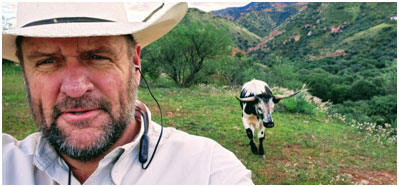 Furthermore, the Chicago meatpacking syndicate threatened to monopolize the industry and control market prices. Some stockmen attempted to avoid this problem by creating packing and refrigeration plants in Texas. Other producers, like John Lytle and C.C. Slaughter, tried to start syndicates of their own. These failed, however, and Chicago packers eventually prevailed over the smaller Texas competition. As a solution, stockmen Murdo Mackenzie and John Lytle joined two rival associations into one lobbying group. In 1906, the National Live Stock Association and American Stock Growers’ Association merged to become the American National Live Stock Association. After a decade-and-a-half of minor legislative gains, the Packers and Stockyards Act was finally passed in 1921. The Act ensured fair competition for ranchers, farmers, and consumers by regulating payment, investigating fraudulent practices, and prohibiting monopolies within the livestock industry. It was a major step forward and crucial to preserving Texas ranching through the modern era.
Furthermore, the Chicago meatpacking syndicate threatened to monopolize the industry and control market prices. Some stockmen attempted to avoid this problem by creating packing and refrigeration plants in Texas. Other producers, like John Lytle and C.C. Slaughter, tried to start syndicates of their own. These failed, however, and Chicago packers eventually prevailed over the smaller Texas competition. As a solution, stockmen Murdo Mackenzie and John Lytle joined two rival associations into one lobbying group. In 1906, the National Live Stock Association and American Stock Growers’ Association merged to become the American National Live Stock Association. After a decade-and-a-half of minor legislative gains, the Packers and Stockyards Act was finally passed in 1921. The Act ensured fair competition for ranchers, farmers, and consumers by regulating payment, investigating fraudulent practices, and prohibiting monopolies within the livestock industry. It was a major step forward and crucial to preserving Texas ranching through the modern era.